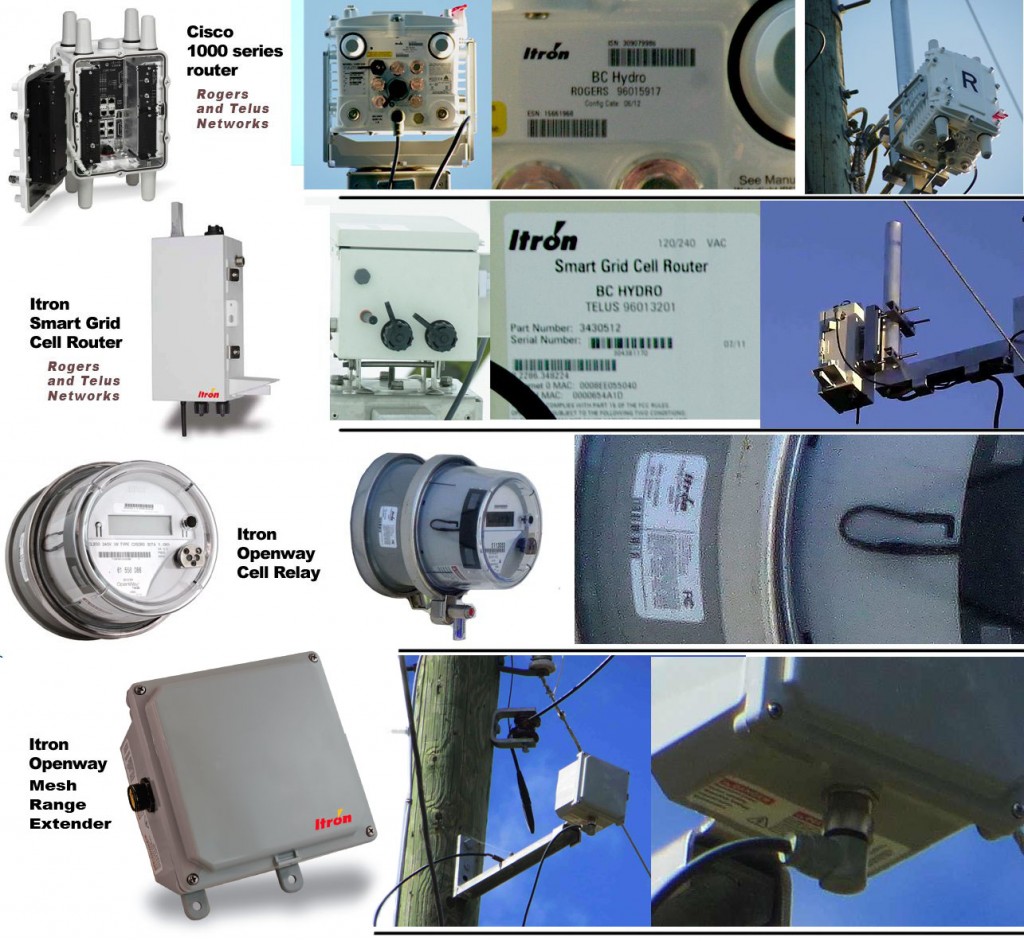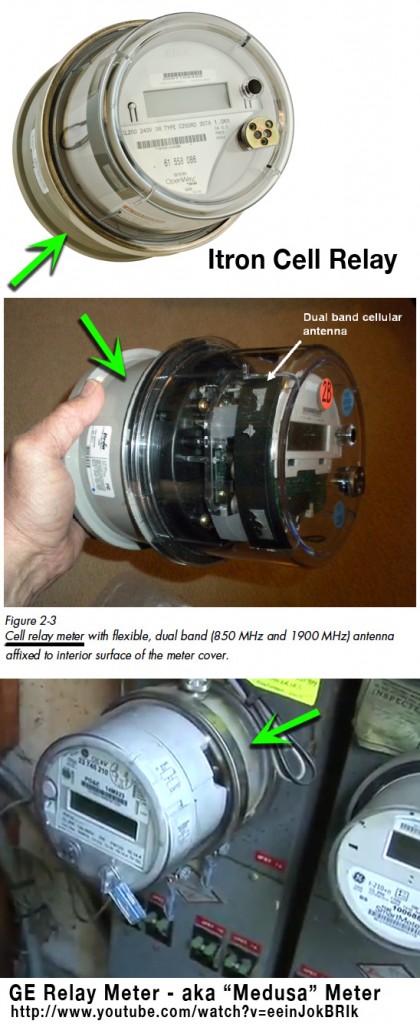Fiona Taylor of BC Hydro stated at a City Hall meeting that BC Hydro has a version of Itron Meters that all homes communicate directly with the MESH NETWORK, bypassing the previous method of CELL RELAY. The Cell Relay communicates with a number of meters then relays the data to a main hub, as shown in the diagram below (Figure 2) from Itron. However if that is the case in BC, all homes are sending data to the MESH NETWORK router boxes on telephone/hydro poles around BC.
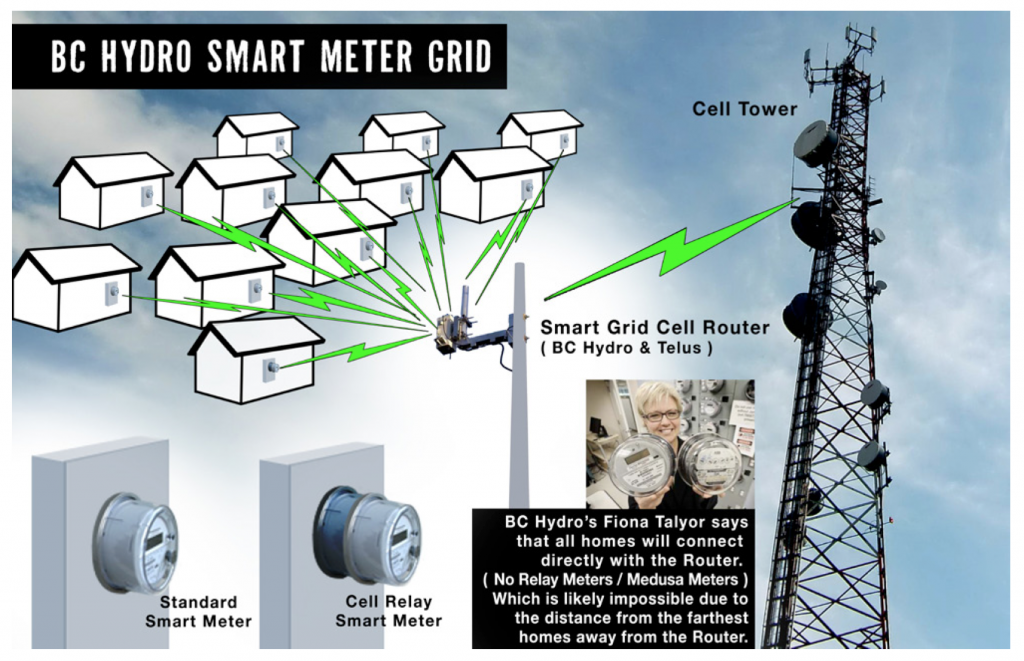
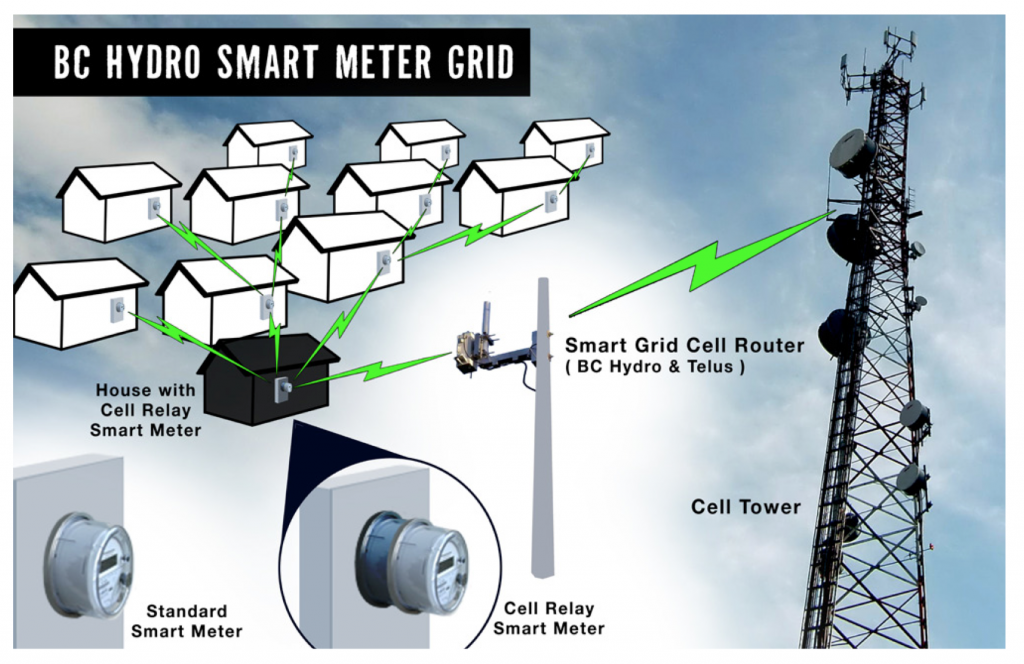
Fiona Taylor from BC Hydro did not mention the Mesh Ranger Extender Antennas, or the additional Antennas mounted on to the Cisco Itron Router Antennas. Both antennas boost the signals when the smart meters are too far from the main network.
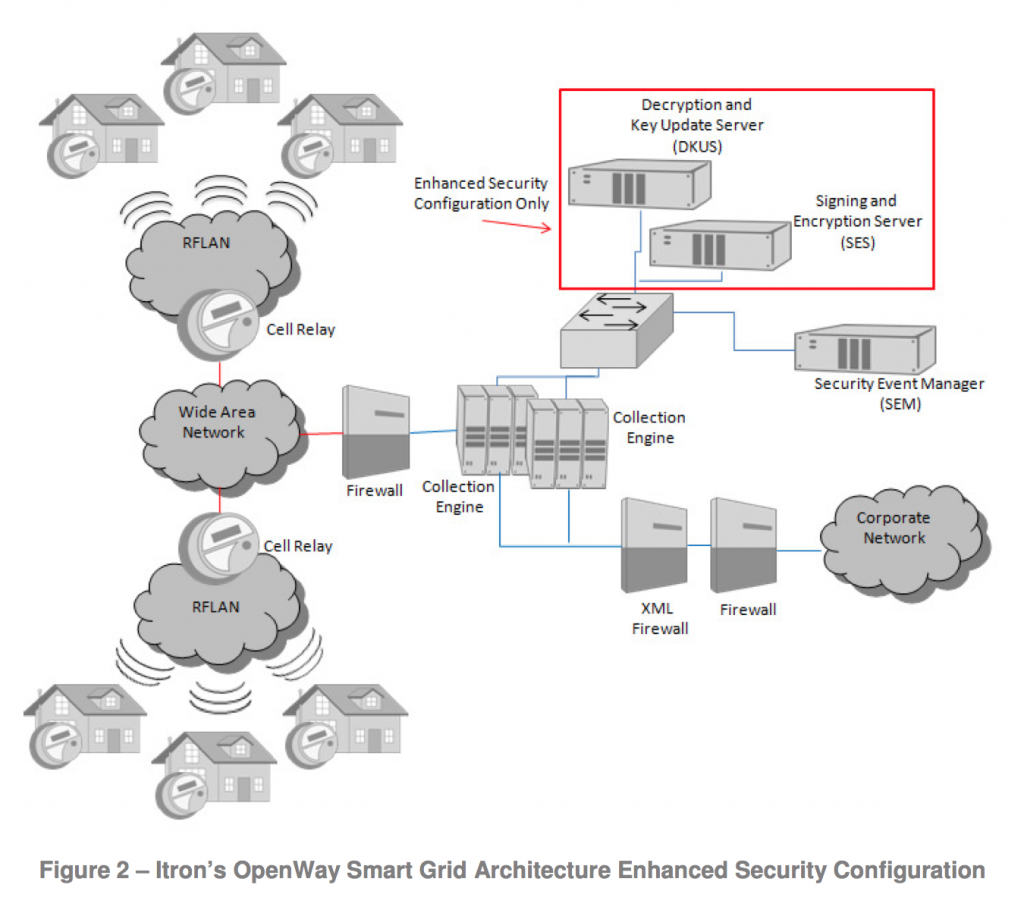
Measuring an Itron Cell Relay – California
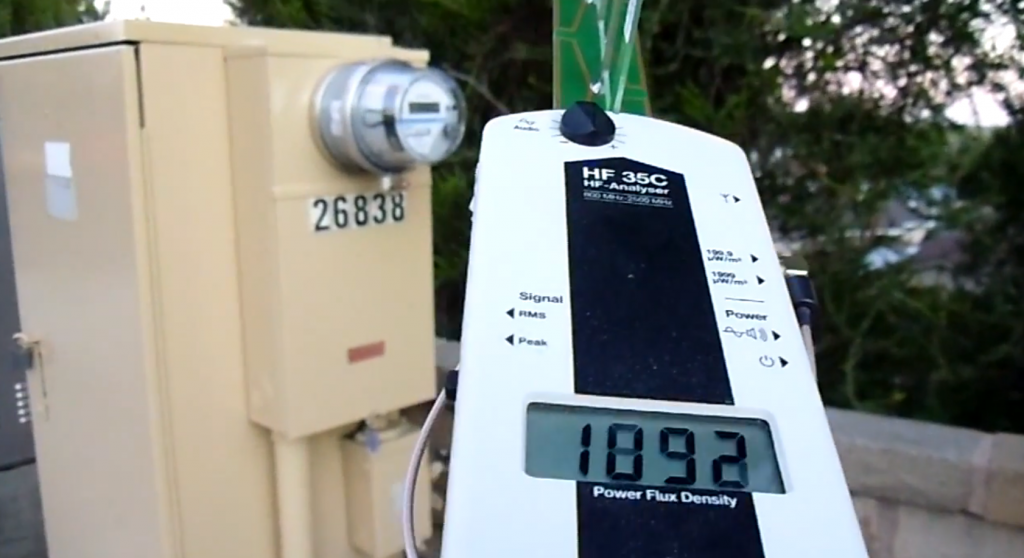
http://www.youtube.com/watch?v=GMasG5EQ340
RFLAN and Cell Relay Communications
The OpenWay radio frequency LAN (RFLAN) is a proprietary frequency-hopping RF network deployed in North America, utilizing the 900 MHz ISM band. Messages are transmitted in accordance with the ANSI C12.22 protocol, and are encrypted using 128-bit shared AES keys and signed using 256-bit ECC private keys.
The Collection Engine interfaces with meters through Cell Relays. Firewalls are recommended between portions of the system; however, the OpenWay architecture requires full two-way communication between the Collection Engine and the Cell Relay. The Collection Engine can be placed behind a firewall and still allow traffic on port 1153 (C12.22) to pass through. The Collection Engine needs to be able to access its database instance as well as the enterprise management system and the meter data management (MDM) application. These applications may be behind additional firewalls, or they may be on the same network as the Collection Engine itself, provided that the Collection Engine has full two-way acce
ss to the appropriate ports for data transfer. This initial communication is done using TCP/IP. As either the Collection Engine or the Cell Relay can initiate communications, both products must accept incoming C12.22 messages on TCP/IP port 1153. The Collection Engine listens on port 1153 for C12.22 communication and monitors the network for Web services calls.
https://www.itron.com/PublishedContent/wp_OpenWaySecurityOverview.pdf
The OpenWay Cell Relay is available either incorporated within the OpenWay CENTRON(R) meter or in pole-mounted, ruggedized housing. The OpenWay architecture delivers operational efficiency, empowers all customers to participate in energy management and conservation, and serves as a cornerstone in connecting utilities to the smart grid.
http://www.electricnet.com/doc/verizon-wireless-and-itron-combine-forces-0001
The smart meters studied in this report are currently being deployed by two electric utilities in California. The meters are part of wireless mesh networks consisting of approximately 500 to 750 “end point meters”; for each of these networks, one me
ter is configured as a collector point referred to as a “cell relay” by Itron. The cell relay collects data from the various end point meters and conveys these data onto the cellular wireless wide area network (WWAN) for communication back to the electric utility company’s data management system. Mesh network communication among the many meters is provided by a 900 MHz band transceiver RF LAN (local area network). A HAN feature is supported by a 2.4 GHz transceiver.
Data collection was carried out in a laboratory setting and at residences and in neighborhoods in southern California and Colville, Washington, supplemented with theoretical modeling studies. The results indicate that RF fields from the investigated smart meters are well below the maximum permitted exposure (MPE) established by the Federal Communications Commission (FCC) for the general public. Fo
r instance, at one foot, the time-averaged RF field from an end point meter would be expected to not exceed 0.8% of the MPE) established by the (FCC). For the cell relay, the RF field would not exceed 0.2% of the MPE. Even at very close distances, such as one foot directly in front of the meter, with an unrealistic assumption that the transmitters operate at 100% duty cycle, the resulting exposure is less than the FCC MPE. When viewed in the context of a more typical, realistic exposure distance of 10 feet, the RF fields are much smaller, about 0.008% for the end point meter and about 0.002% of MPE for the cell relay. For occupants of a home equipped with a Smart Meter, interior RF fields would be expected to be at least ten times less intense simply due to the directional properties of the meter. When the attenuation afforded by a stucco home’s construction is included, a realistic value of the interior RF field would be about 0.023% of the MPE for an end point meter and about 0.065% for a cell relay. Regardless of duty cycle values for end point and cell relay meters, typical exposures that result from the operation of smart meters are very low and comply with scientifically based human exposure limits by a wide margin.
http://www.epri.com/abstracts/Pages/ProductAbstract.aspx?ProductId=000000000001021126
ITRON CELL RELAY (PDF) from itrco.jp
••••••••••••••••••••••••••••••••••••••••••••••••••••••••••••••••••••••••••••••••••••••••••••••••••
BC HYDRO – Smart Meter ( Wireless / Constant )
BC HYDRO – Smart Meter Router ( Wireless / Constant )
